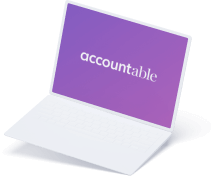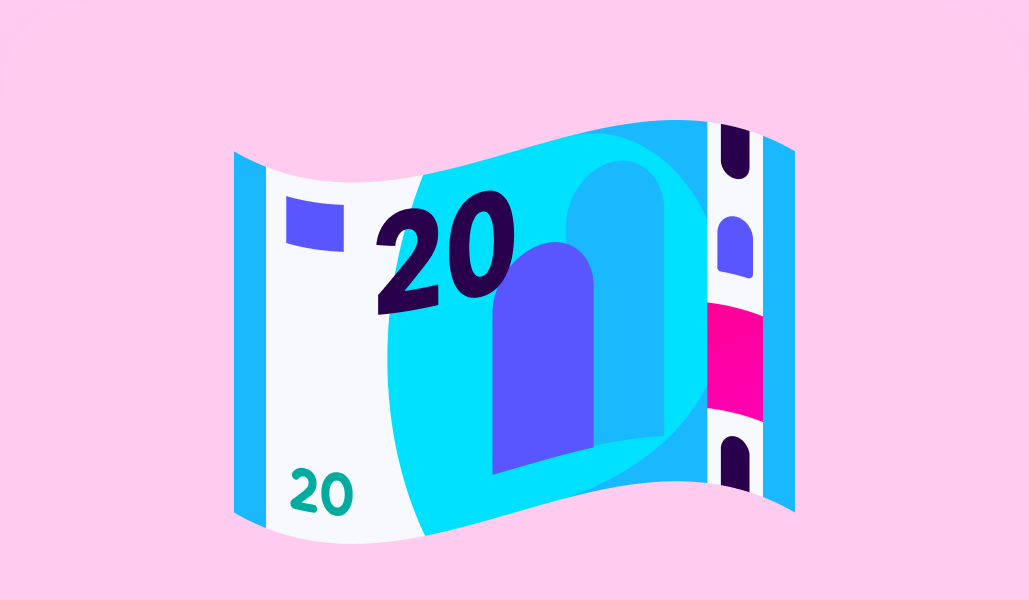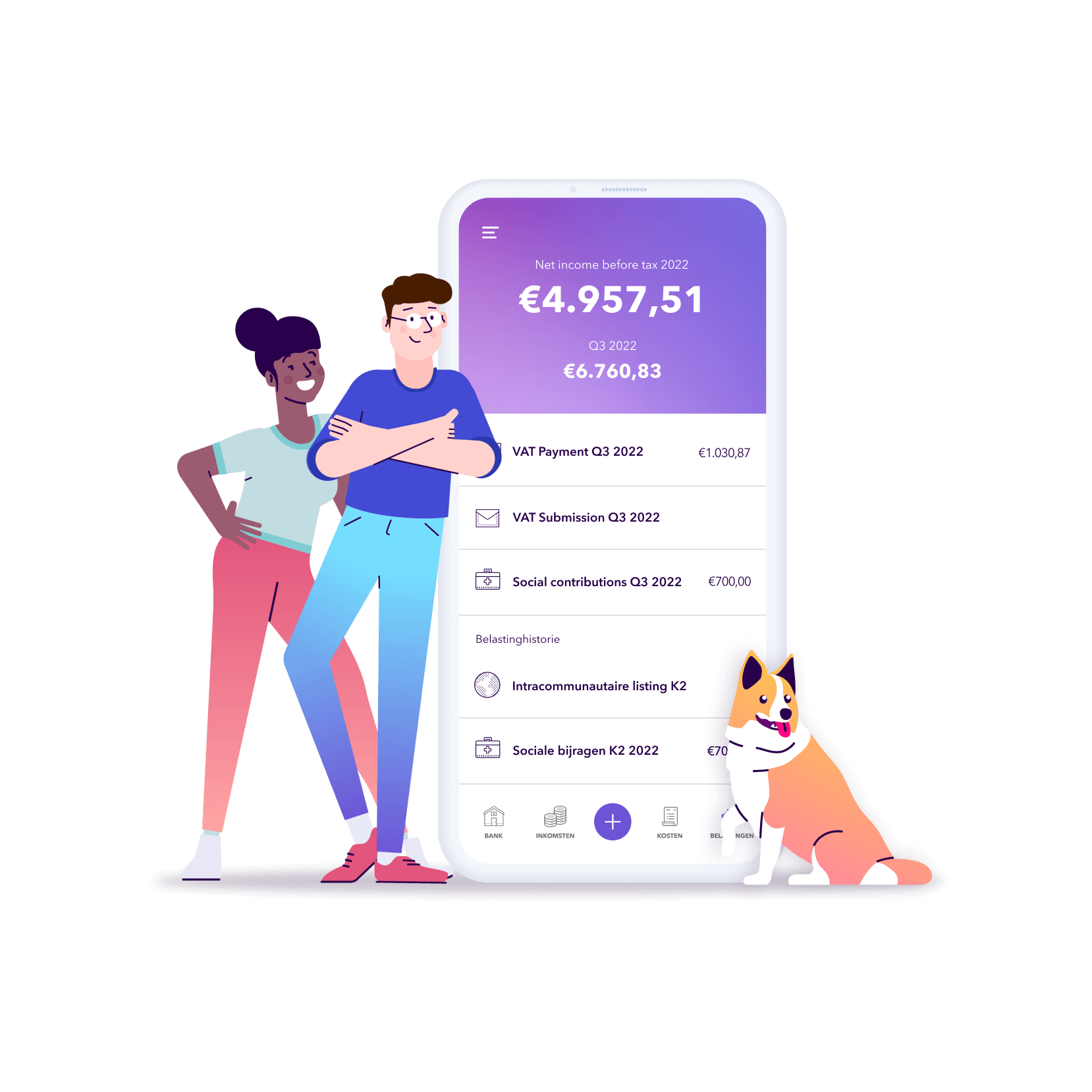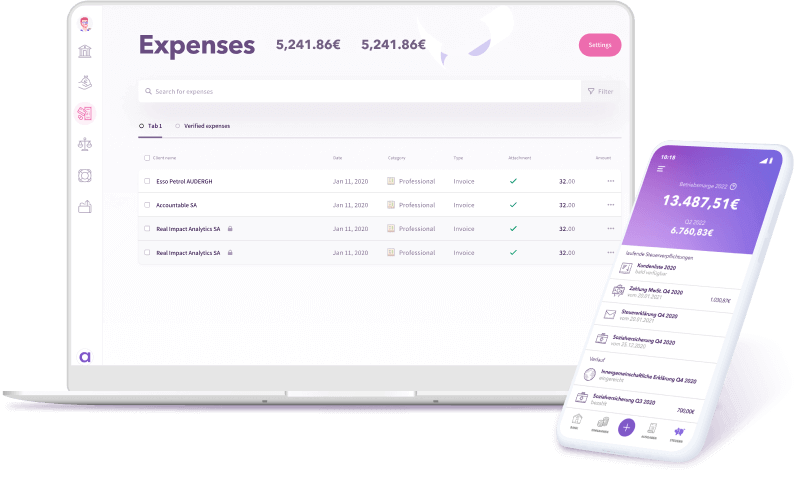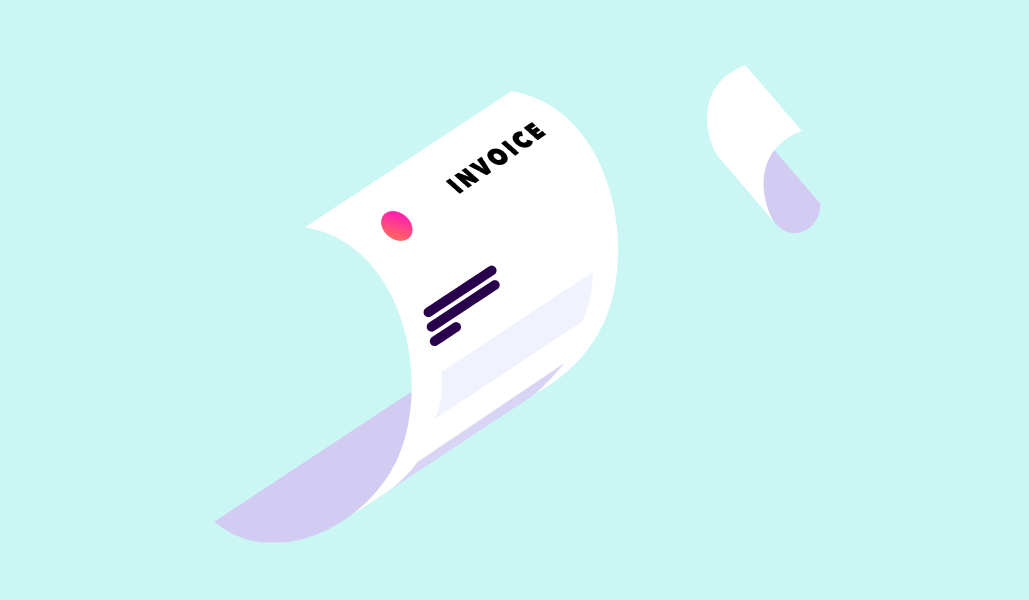
Everything you need to know about invoices
Read in 8 minutes
Invoicing is part of every self-employed person’s daily routine – and yet this part of accounting is often a big question mark for many aspiring freelancers. How do I write an invoice? When can I invoice my services in the first place? And what can I do if a client doesn’t pay the invoice? We answer all these questions and more on this page.
Content
- What should be included on an invoice?
- When do I have to issue my invoice?
- What date do I need to include on my invoice?
- What payment term should my invoice contain?
- How do I issue an invoice abroad?
- What is the reverse charge procedure?
- How do I issue an invoice as a small business owner?
- How do I issue an invoice to myself?
- What to do if there are errors on the invoice?
- What to do if a customer does not pay?
- How do I issue a payment reminder?
- Tools for creating invoices
What should be included on an invoice?
There are strict rules set out by the German government on what a legally valid invoice has to look like. You can of course choose which font to use and include your logo, but the content of the invoice should contain at least the following information:
- Your full name
- Your (professional) address
- The full name and address of the invoice recipient
- Your tax number or, if applicable, your VAT number
- The date your invoice was created
- A consecutive invoice number
- The quantity and a description of the goods delivered or the nature and scope of a service provided
- The price for the listed services
- The date of delivery or performance of the service
- The applied VAT rate for the services rendered
You may also be required to provide any of the following optional additional information:
- Details of any discounts
- References to a tax exemption (see small business).
💡 Tip from Accountable: With the free invoice template from Accountable, you are guaranteed to always have all mandatory information noted on your invoices.
When do I have to issue my invoice?
It’s best to discuss when exactly you need to invoice your customers in advance. As a rule, you will probably send monthly invoices for regular tasks, or you will invoice after the successful completion of a project.
But: You must submit an invoice no later than six months after you have provided the service. This is required by law. However, this only applies if you invoice a company or another self-employed person.
If the recipient of the invoice is a private person, there is no statutory period within which you must issue your invoice. The only exception to this rule are services performed in connection with real estate. This includes, for example, construction work, DIY work, gardening work or cleaning services. For such services, you must also submit your invoice within six months, even if the recipient is a private individual.
What date do I need to include on my invoice?
You must indicate two dates on your invoice: The date on which you send the invoice and the date of service provision or delivery, i.e. when you provided the service for which you are invoicing.
However, this is not always so easy to quantify, as many self-employed people are repeatedly commissioned by clients to perform smaller tasks over the course of a month and prefer to issue a collective invoice at the end or beginning of the month rather than writing an invoice for each individual service.
You can get around this by including the following sentence on your bundled invoice:
Service date equals invoice date
Alternatively, if the customer is a recurring job, you can note the month and year, for example:
May 2022
What payment term should my invoice contain?
You are free to specify an individual payment term on your invoice within which you would like to receive your money, for example 14 days. If you do not specify an individual deadline, then the invoice recipient must comply with the legal requirements.
These state that the invoice must be paid immediately. However, the recipient is generally granted an extension of 30 days. Accordingly, the legal deadline is 30 days, which a customer has time to settle your payment.
Good to know: If the last day of the payment period falls on a weekend or a holiday, then the deadline is postponed to the next following business day.
How do I issue an invoice abroad?
Many freelancers work not only with German customers but also with international clients. Of course, this is perfectly legitimate and does not pose a problem for your invoicing. However, there are a few legal things regarding VAT that you have to consider – and it depends on the country in which the invoice recipient is located.
Case 1: Your customer is located in another country outside the EU
Invoicing a customer in a country outside the European Union is called invoicing a Drittland, or third country. In this case, you will of course first need to linguistically adapt the invoice, if it’s not already in English, unless you are proficient in your customer’s national language or have made some other individual agreement with the customer.
If the country in question has a tax agreement with Germany, the invoice recipient must then usually pay VAT in their country. Switzerland, for example, has such a tax agreement with Germany. This means that you do not have to include VAT on an invoice to Switzerland.
However, if there is no such tax agreement, you must inquire about the tax regulations in the country and make appropriate arrangements to pay the sales tax. A tax advisor who is familiar with the tax regulations in the country can help you with this.
Case 2: Your customer is located in another country within the EU.
If you want to invoice a customer in another country within the European Union, then it’s a bit easier. This is because, thanks to the European Community, the handling of VAT for transactions within the EU is also precisely regulated – using the so-called reverse charge procedure.
➡️ How to create the perfect invoice in Germany
What is the reverse charge procedure?
The reverse charge procedure regulates the taxation of services across the national borders of EU countries. This involves the correct passing on of VAT.
If you are registered for tax purposes in Germany and issue an invoice to a customer in another country that is also a member state of the European Union, you do not have to include VAT on your invoice.
In this case, the recipient of the invoice is obliged to correctly settle the VAT with his national authorities. The tax liability is therefore shifted from the invoicing party to the recipient of the service – and this is known as the reverse charge procedure.
All you have to do as an invoicing party is to make a corresponding note on your invoice. In German, you can either write Steuerschuldnerschaft des Leistungsempfängers or simply use Reverse Charge as the English term for it.
➡️ You can read more about the Reverse Charge procedure here
💡 Tip from Accountable: If you use the reverse charge procedure, you have to note these services in your advance VAT return as so-called tax-exempt sales. In addition, you must also submit a recapitulative statement in which you list all services provided in other EU countries.
How do I issue an invoice as a small business owner?
Another exception is invoicing as a small business owner. Since you are exempt from paying VAT as a small business owner anyway, you do not have to include it on your invoice.
However, again a note is necessary so that your invoice recipient knows why you have waived the display of VAT.
If you make use of the small business regulation, then you should note the following sentence on your invoice:
According to § 19 UStG no sales tax will be charged.
➡️ Learn more about the small business rule
How do I issue an invoice to myself?
You can find yourself in a situation where you have to issue an invoice to yourself. For example, if you are engaged in two different self-employed activities, and in doing so you use the services of your other company for one of them. Or you use your own services as a private person.
An example makes this a bit clearer: You work as a self-employed car mechanic and your private car breaks down. You repair it yourself, but would now have to bill yourself for it, so to speak.
However, this is only legally possible if you have a limited liability company. With other legal forms, this is more of a service withdrawal. A tax advisor can tell you exactly how you should account for this individually and note it correctly.
➡️ What it’s like to be a tax advisor in Germany
What to do if there are errors on the invoice?
It can always happen that an error has crept in on an invoice you have issued. This is unpleasant, but it can most definitely be corrected. First of all, it depends on what kind of error it is. Typos or spelling mistakes, where the meaning of the invoice is still recognizable, do not need to be corrected.
However, if the date, the invoice number or an incorrect invoice amount has been specified, or if you have forgotten one of the mandatory details described at the beginning, you must make a correction. Otherwise, your customer will not be able to claim the invoice for his input tax, i.e. he will not get back the VAT paid.
How you proceed with a correction depends on whether the invoice has already been paid or whether it is still outstanding, meaning you have not yet received any money for it.
The invoice has not been paid yet
If your invoice has not yet been paid by the customer, then you can simply send a corrected invoice. You use the same invoice number as on the first invoice and just change the date of the invoice so that the legal (or your individual) payment deadline starts all over again.
The invoice has already been paid
If you notice the error on the invoice only after the invoice has already been paid, then you must issue a so-called cancellation invoice, or invoice correction. You cannot simply adjust the error and send the same invoice again.
The cancellation invoice is a credit note. For this, you write an invoice with the negative amount of your original incorrect invoice and then issue a new, corrected invoice. The new invoice must contain a new invoice number.
What to do if a customer does not pay?
Now we come to a rather unpleasant issue: You have issued an invoice, but your customer does not pay. This can happen again and again, especially with self-employed people. However, the law is on your side here. That means: If you have provided a service, then you must also be paid for it.
As soon as a payment deadline has expired and your customer has not yet paid, you should contact them and remind them of the payment. You can do this by phone or by e-mail, so that you have a written proof of the payment reminder.
If there is still no response to your reminder, then you can already become a bit firmer in your tone and preferably send a first official reminder, pointing out the terms of your agreement and the payment deadline. In addition, you can also mention possible reminder fees that will become due in case of further refusal to pay.
If this reminder is ignored as well, then you can initiate a judicial dunning procedure as a last resort.
💡Tip from Accountable: If you send your invoices via our app, you will automatically be informed about due dates and incoming payments. You can also send payment reminders directly from the app.
How do I issue a payment reminder?
You are not legally obliged to issue a payment reminder. As soon as your customer has not paid their invoice within the payment period, you can theoretically directly charge a reminder fee of 40 euros.
However, in order to maintain a good relationship with your customer, it is advisable to send a reminder first and to seek dialogue. Sometimes it is simply a misunderstanding or an omission, and especially with large companies, payment processing can take a little longer.
However, if you still do not hear back from your customer, then you should initiate a legal dunning procedure. To do this, you must file an application and describe your case, after which the procedure is reviewed and a reminder notice is issued to the debtor. If the dunning procedure is successful, the debtor must also bear the costs of the procedure.
➡️ You can learn more about the judicial dunning procedure here
Tools for creating invoices
If you work with many different customers, writing invoices can quickly take up a lot of time. That’s why many self-employed people use tools and software to save them from creating invoices by hand.
Accountable offers such an invoice template. In our template you only need to fill in the relevant fields and you will have created a professional and legally correct invoice in no time.
Did you find what you were looking for?
Happy to hear!
Stay in the know! Leave your email to get notified about updates and our latest tips for freelancers like you.
We’re sorry to hear that.
Can you specify why this article wasn’t helpful for you?
Thank you for your response. 💜
We value your feedback and will use it to optimise our content.

